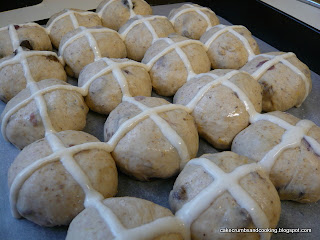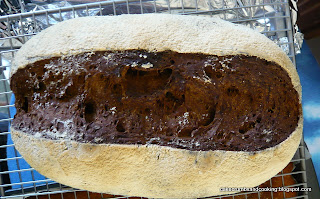For random recipe this month Dom is celebrating his second blog anniversary - Happy Blogiversary Dom! And so he has asked us to bake a cake to help him celebrate.
One of my more recent purchases (thanks to Sainsbury's having the 'My Kitchen Table' series of books (of which I have a few now...) for only £3.99 each) was Mary Berry's 100 Cakes and Bakes. Having watched a number of bakers participating in Amy's Weekly Bake Off I was suitably inspired to purchase the book when I saw it, having seen the success that other people have had with various of the recipes.
And I've not been disappointed! The book is full of basic (but solid, reliable) recipes - the ones every baker should have in their repertoire - Victoria Sponge, Cupcakes, Coffee and Walnut Cake, Banana loaves and many, many more. It's my kind of baking - simply, straightforward and down to earth. The decoration isn't usually piled high and OTT, but is suited to the cakes in the book and many of them lend themselves to sharing with work colleagues, which is usually where most of my cakes end up! There are also lots of twists on classic cakes too - I would recommend this handy little book!
So it makes sense that the random reaching of my hand found this book - it has been close by for a while now. And the page that was opened was for Iced Apricot Fruit Loaf, on page 90-91. As is sometimes the nature of random choices I didn't want to use the fruit specified and so adapted the recipe slightly. It is still Mary's recipe so I won't be reproducing it here, but will note for my reference that the 75g of cherries specified became 60g and the 100g of chopped ready to eat dried apricots and 150g sultanas morphed magically into 100g dried cranberries and 100g raisins and the specified self raising flour was replaced with 175g plain flour and 1 3/4tsp baking powder.
I am always dubious when I see recipes stating that a 2lb loaf cake will be cooked in 40 minutes or so, and was relieved that Mary's instructions are to bake for 1hr 10 minutes, by which time the cake was cooked. You might want to check at an hour though.
I was really pleased with the way this cake turned out. It was juicy and moist (I had been worried by the picture that accompanies the recipe as it looks a little dry to me) and perhaps most surprisingly tasted quite strongly of glace cherries. Given that only 60g had gone into the whole cake, and I'm sure there wasn't a bit in each mouthful, the taste was quite prominent. I hasten to add that this wasn't a problem at all - I like glace cherries! So with all of my red fruit substitutions this isn't quite Mary's recipe, but it turned out well. I'm not quite sure that it's a birthday cake, but I hope you enjoy this submission anyway Dom!
I'm sure there will be more cakes from this book appearing in my life (and probably this blog...) quite soon.





















































